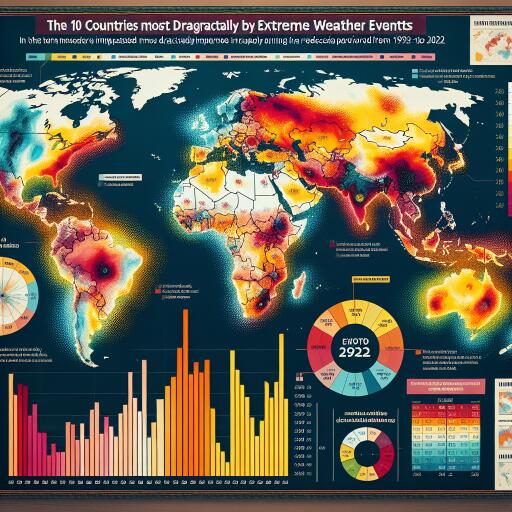
India Among 10 Countries Most Affected by Extreme Weather Events in Three Decades
Devastating Impact on Global South
The Global South has bore the brunt of extreme weather conditions over the last 30 years, spotlighted by findings from a prominent environmental study. In several instances, countries such as Dominica have faced financial losses from single catastrophic events that exceed their entire gross domestic product.
The analysis evaluates how countries are impacted by severe weather, ranking them based on economic damage and human toll, which includes fatalities and displaced populations. Those ranked highest have been the most severely impacted.
Statistics on Extreme Weather Events
Between 1993 and 2022, the world experienced over 9,400 extreme weather incidents. These events claimed nearly eight lakh lives and led to economic losses estimated at $4.2 trillion when adjusted for inflation. Nations like China, India, and the Philippines are frequently affected, while others like Dominica, Honduras, Myanmar, and Vanuatu suffer from isolated devastating events.
The upcoming international climate conference (COP) in Brazil is urged to address the pressing need for increased climate funding. This financial support is crucial for bolstering the resilience of vulnerable nations and effectively managing loss and damage. To mitigate future harm, countries are encouraged to accelerate their climate initiatives, aiming to limit global warming to below 1.5°C.
Countries Most Impacted: 1992-2022
- Dominica
- Honduras
- Myanmar
- Vanuatu
- Belize
- Italy
- Greece
- Puerto Rico
- India
- Philippines
Nations experiencing significant impact in 2022 includes:
- Pakistan
- China
- Italy
- Greece
- Spain
- United States
- Portugal
- Bulgaria
- Nigeria
- Vanuatu
European Countries in the Highlight
The data reveals that three European Union countries, namely Italy, Spain, and Greece, stand among the top 10 most affected globally over this period. If their data was as comprehensive as that from countries in the Global North, even more pronounced effects might become evident.
High-income and high-emission nations are urged to perceive the urgency in speeding up mitigation strategies. A lack of investment in both mitigation and adaptation steps today will result in monumental human and economic impacts tomorrow.
Need for Increased Mitigation Efforts
Countries most at risk are often hit hardest due to inadequate financial and technological resources to adapt and handle these challenges. The urgency lies in boosting mitigation efforts through updated climate commitments. These efforts should focus on maintaining the temperature rise below or as close as possible to 1.5°C.
As the world continues to grapple with the escalating challenges posed by a changing climate, the findings underscore a shared and urgent mandate for a robust adaptive response. Strategies aimed at reducing the impacts and increasing resilience are not just necessary for hard-hit countries, but are a critical requirement for global stability and security.
The understanding of these patterns and the call for greater cooperation and funding is evident. World leaders will once again gather to negotiate and hopefully implement these crucial strategies at the forthcoming environmental summit.





Leave a Reply